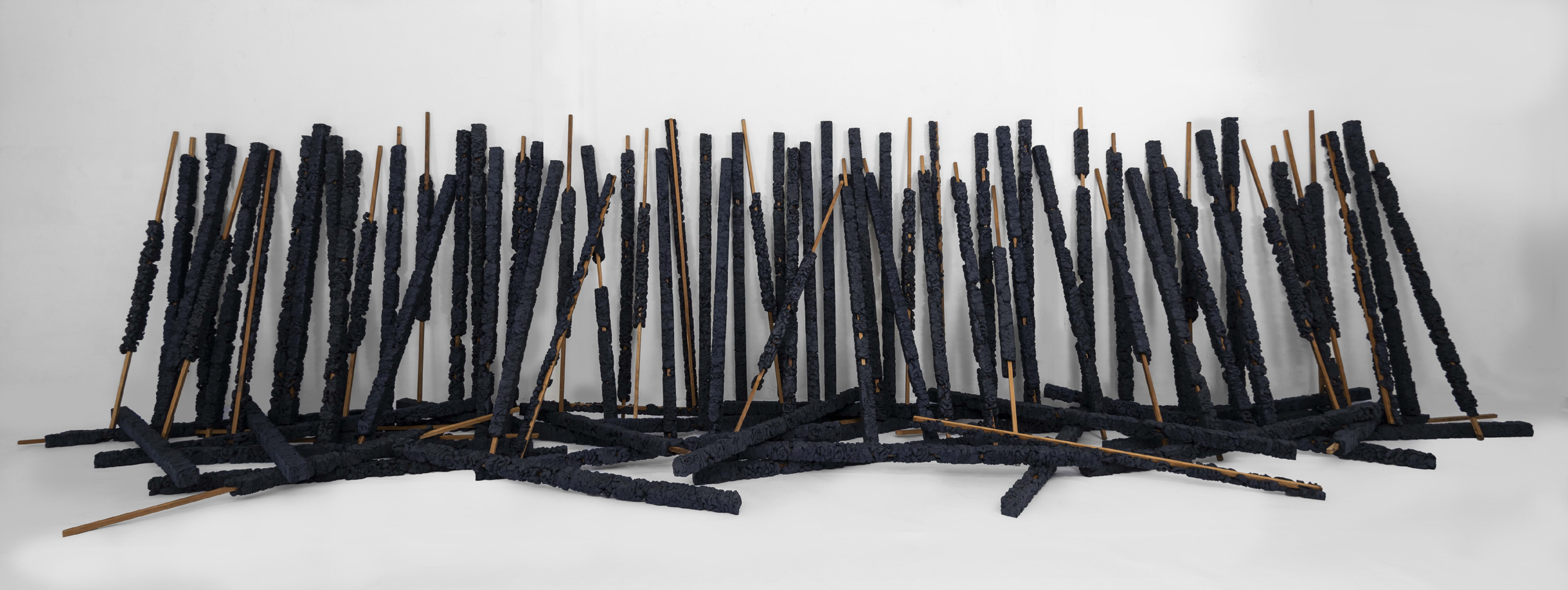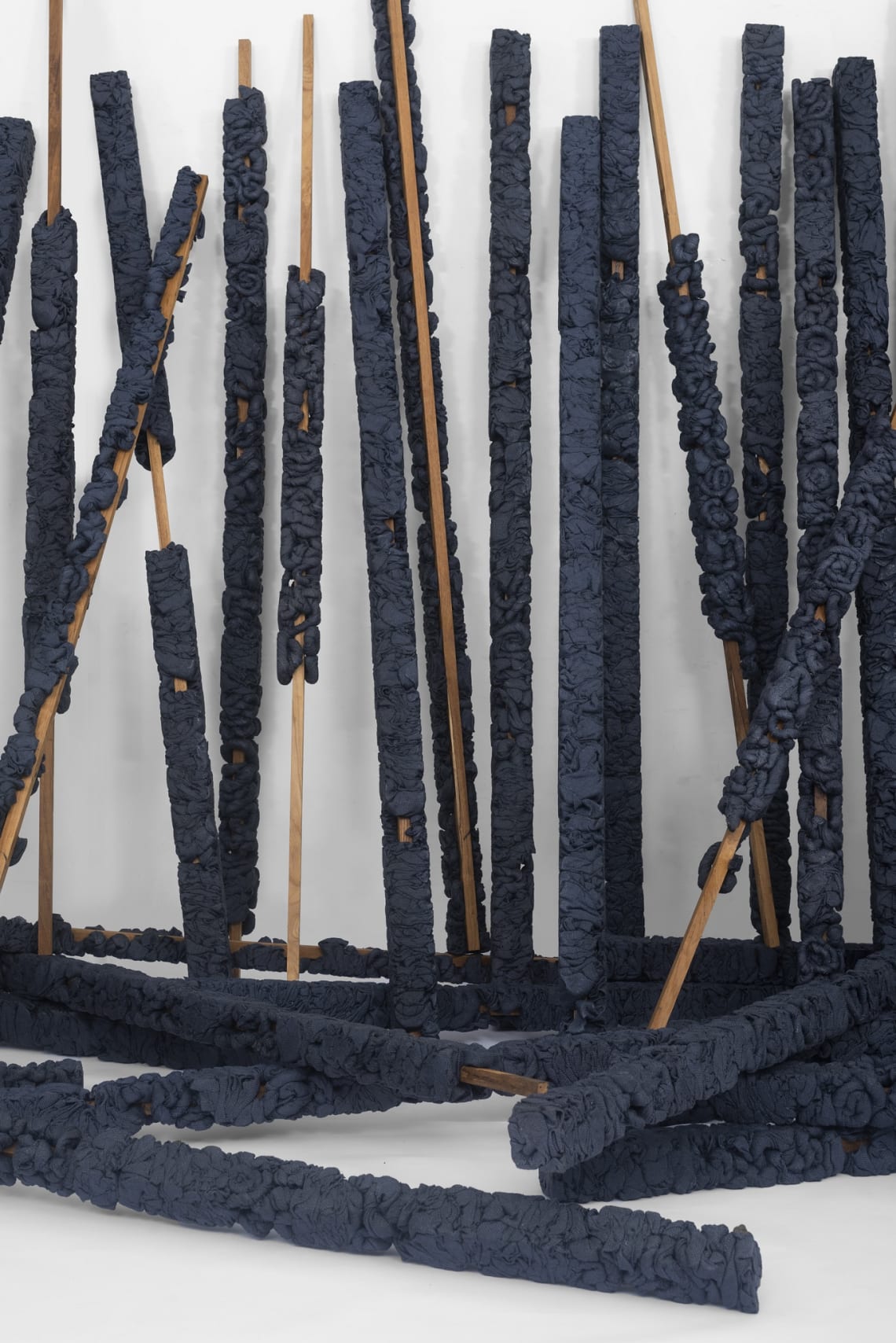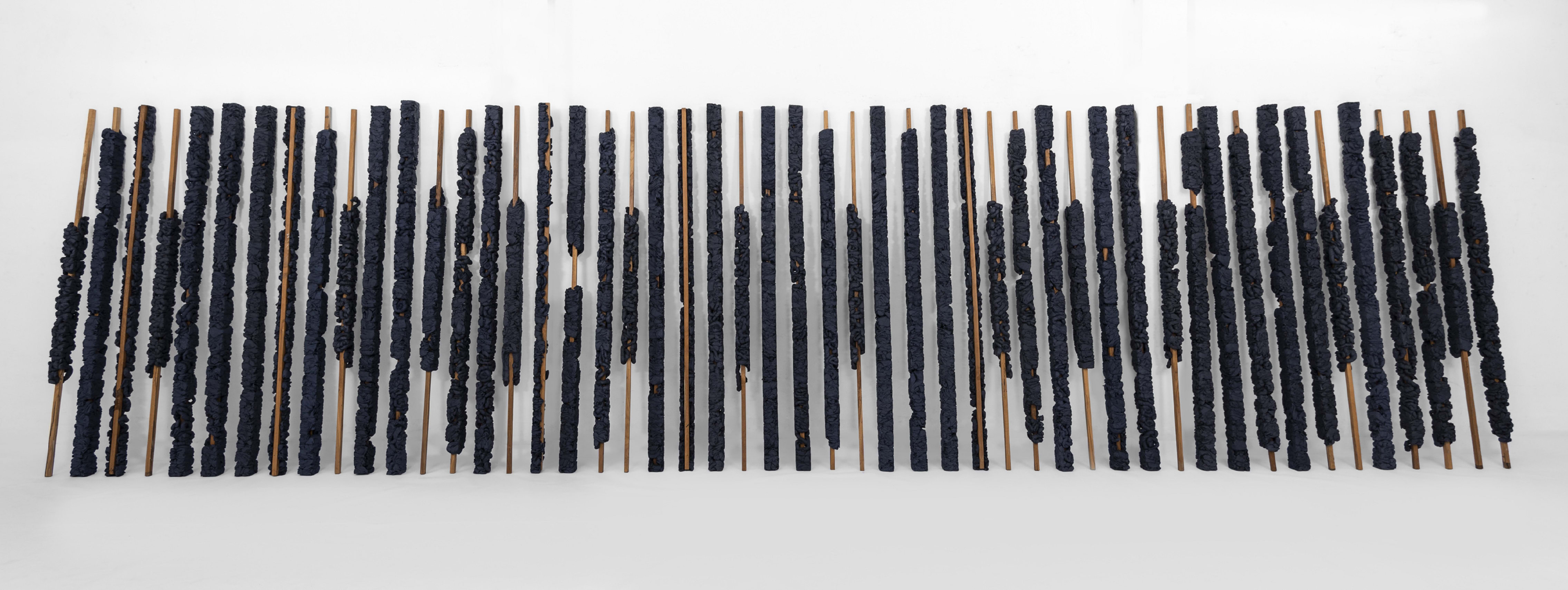Untitled, 2018




Kavi Gupta
In the sculptural installation here, Manish Nai references the tainted history of indigo on the South Asia subcontinent, alluding to its links to colonialism and the institution of debt-based slavery. British colonialists wreaked social and ecological havoc on the population of Bengal by forcing farmers to cultivate indigo instead of the food crops required for survival, and charged huge rates of interests to farmers on loans for indigo farming. This eventually led to the Indigo Revolt of 1859, where indentured indigo farmers rose up against the ruling colonial and land-owning classes before being brutally suppressed. During the First World War, when synthetic indigo from Germany was no longer available in Britain, Indian farmers were again pressed to grow the plant. An agitation launched by indigo farmers in 1917 (in a district called Champaran in the northern state of Bihar) became the site of Mahatma Gandhi’s introduction of satyagraha (or non-violent resistance) to the Indian freedom movement. Nai’s work layers these histories of labor, anti-imperialist struggle, and the materiality of culture in a formal practice which also draws influence from minimalism, architecture, environmentalism, and contemporary urban India.
Manish Nai (born 1980 in Gujarat, India) is known for his photographs of faded billboards and often makes use of waste as a way of ‘compressing the city’ in his work. Old clothes, newspapers, and cardboard boxes are some of the materials he has employed in his investigations of time and space. He lives and works in Mumbai.
Access the Audio Guide by Magalí Arriola.